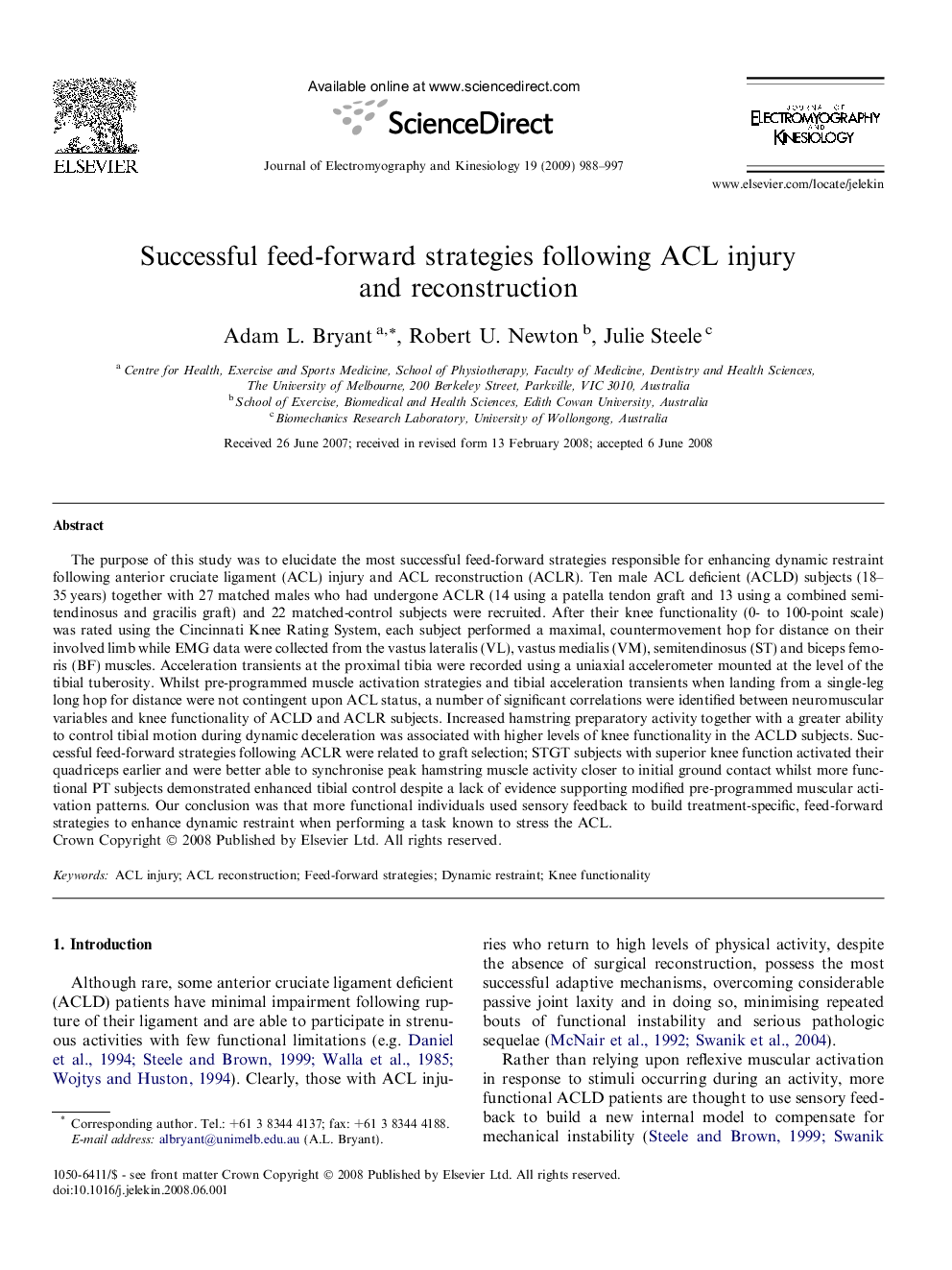| Article ID | Journal | Published Year | Pages | File Type |
|---|---|---|---|---|
| 4065238 | Journal of Electromyography and Kinesiology | 2009 | 10 Pages |
The purpose of this study was to elucidate the most successful feed-forward strategies responsible for enhancing dynamic restraint following anterior cruciate ligament (ACL) injury and ACL reconstruction (ACLR). Ten male ACL deficient (ACLD) subjects (18–35 years) together with 27 matched males who had undergone ACLR (14 using a patella tendon graft and 13 using a combined semitendinosus and gracilis graft) and 22 matched-control subjects were recruited. After their knee functionality (0- to 100-point scale) was rated using the Cincinnati Knee Rating System, each subject performed a maximal, countermovement hop for distance on their involved limb while EMG data were collected from the vastus lateralis (VL), vastus medialis (VM), semitendinosus (ST) and biceps femoris (BF) muscles. Acceleration transients at the proximal tibia were recorded using a uniaxial accelerometer mounted at the level of the tibial tuberosity. Whilst pre-programmed muscle activation strategies and tibial acceleration transients when landing from a single-leg long hop for distance were not contingent upon ACL status, a number of significant correlations were identified between neuromuscular variables and knee functionality of ACLD and ACLR subjects. Increased hamstring preparatory activity together with a greater ability to control tibial motion during dynamic deceleration was associated with higher levels of knee functionality in the ACLD subjects. Successful feed-forward strategies following ACLR were related to graft selection; STGT subjects with superior knee function activated their quadriceps earlier and were better able to synchronise peak hamstring muscle activity closer to initial ground contact whilst more functional PT subjects demonstrated enhanced tibial control despite a lack of evidence supporting modified pre-programmed muscular activation patterns. Our conclusion was that more functional individuals used sensory feedback to build treatment-specific, feed-forward strategies to enhance dynamic restraint when performing a task known to stress the ACL.
